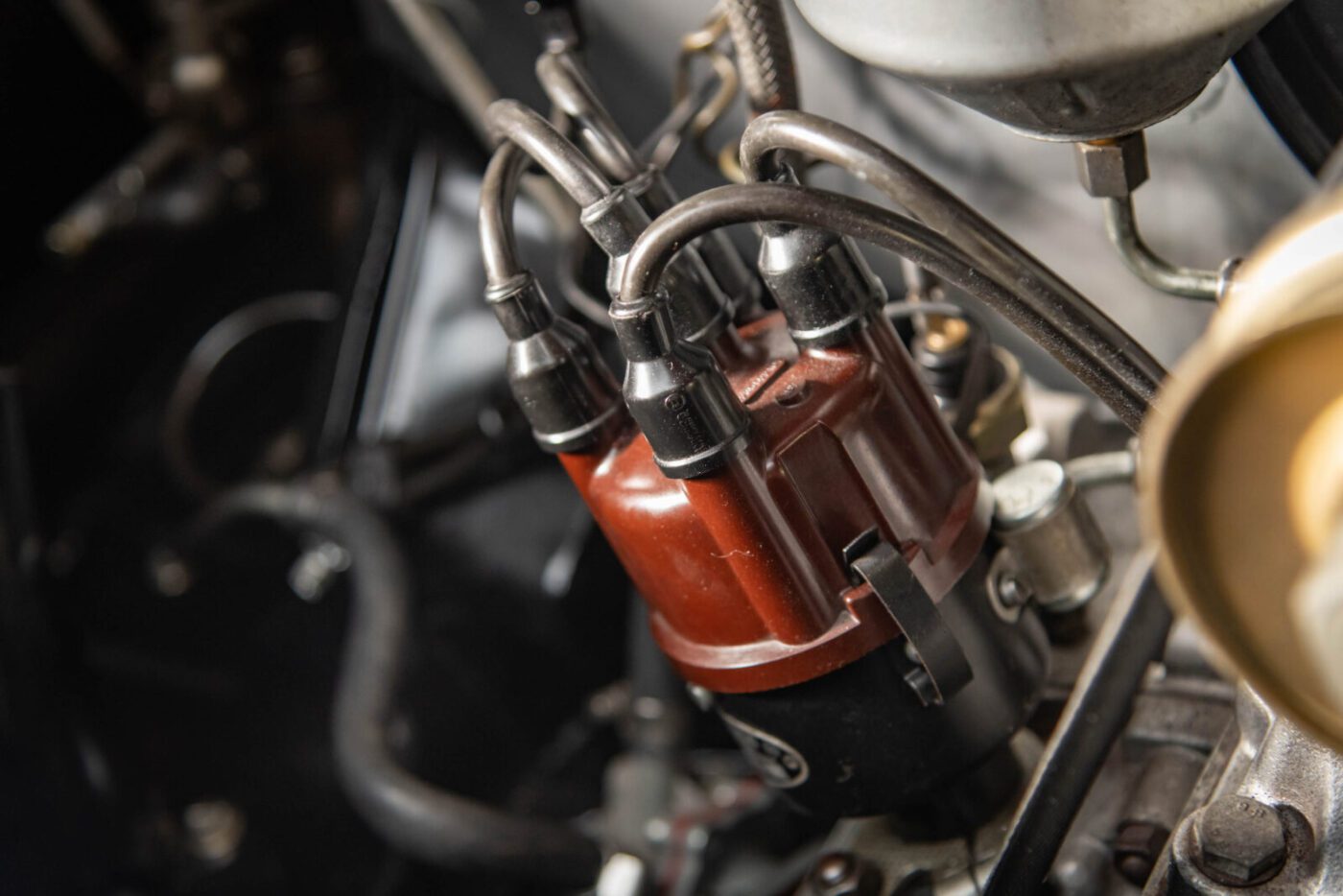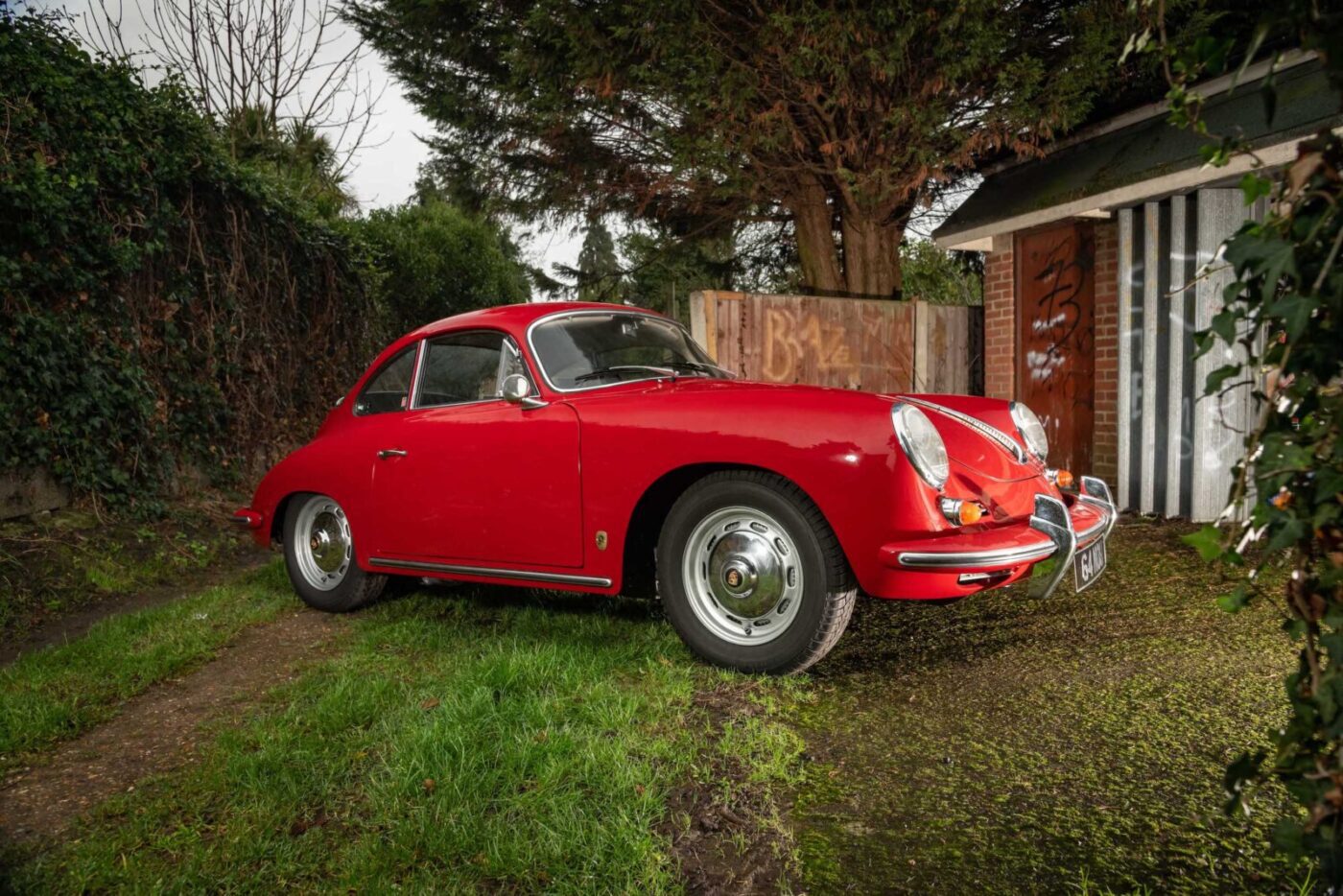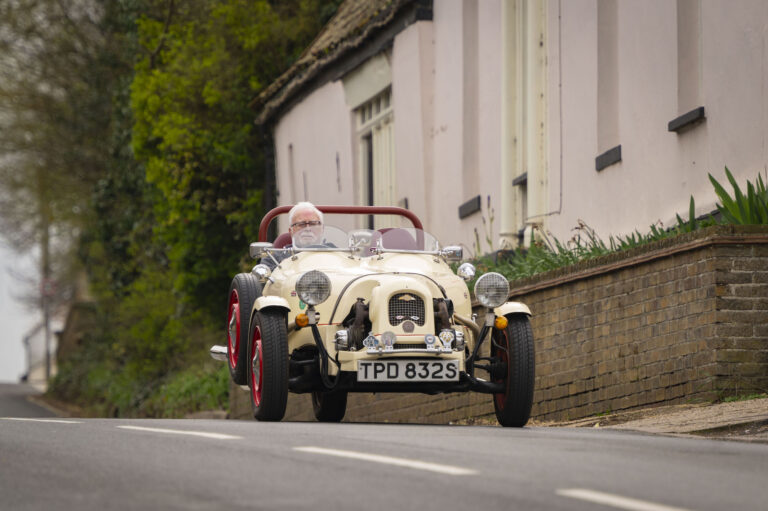Mike Bolt’s Porsche 356B has spent far more of its life off the road than on it, including all but about six years of his 46-year ownership.
It explains the low mileage of just under 42,000, the vast majority of which were covered before it was laid up in January 1977.
But after a 10-year restoration, completed in November 2016, former Beetle mechanic Mike is finally making up for lost time in the stunning 1963 ruby red 1600S.
Bought for just £365 in 1974, you’d need to double that and stick on a couple of noughts before you get close to what it’s worth today.
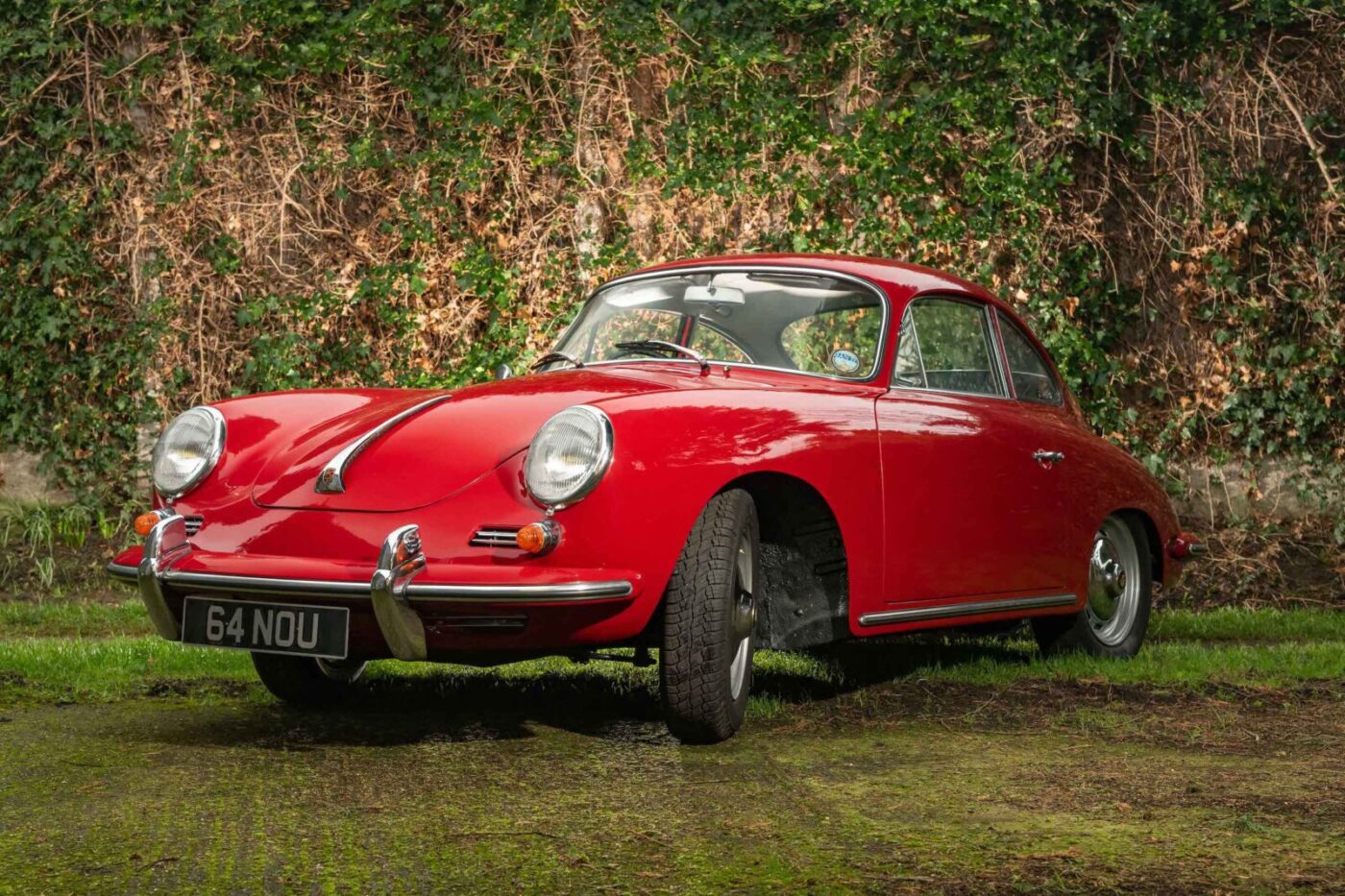
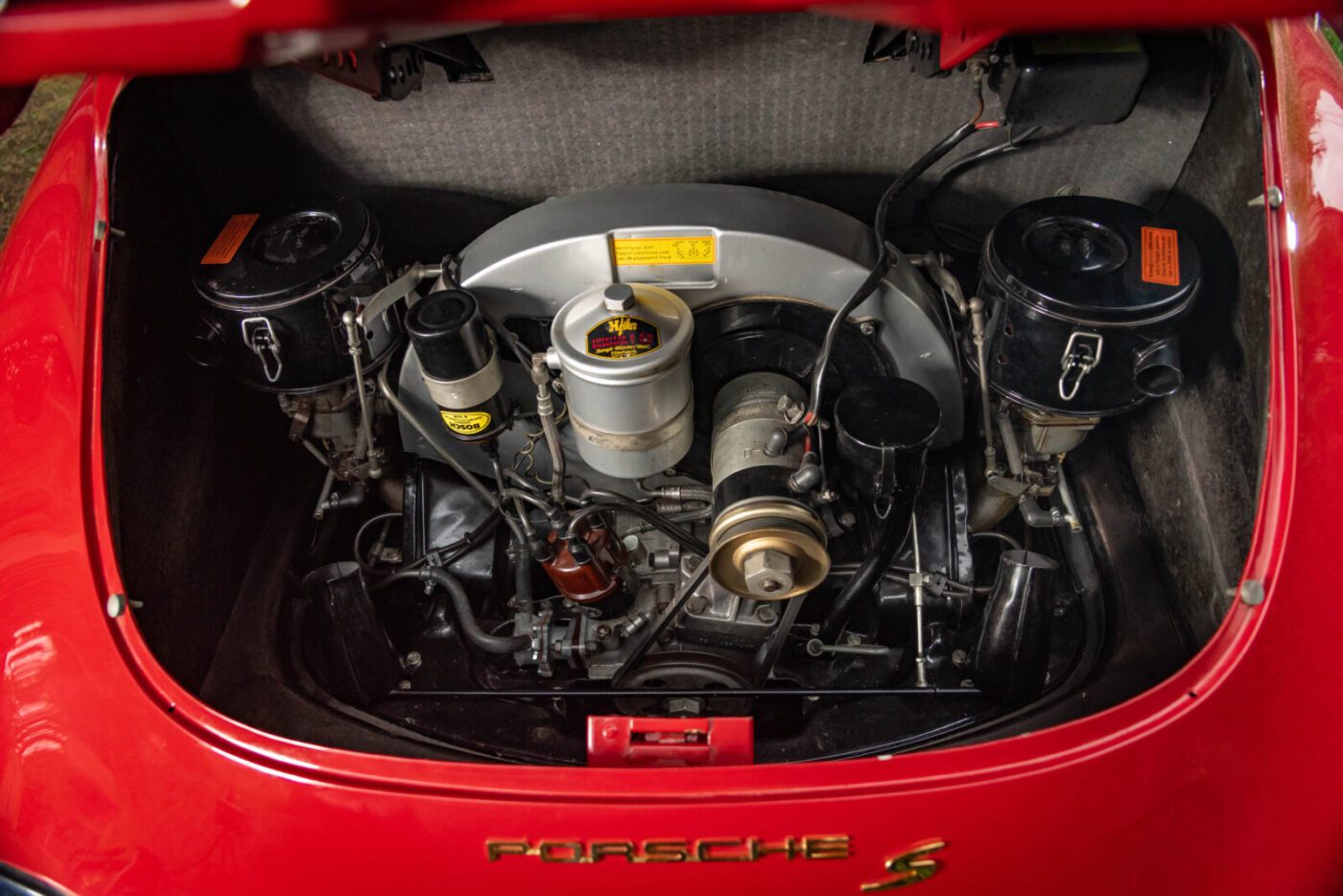
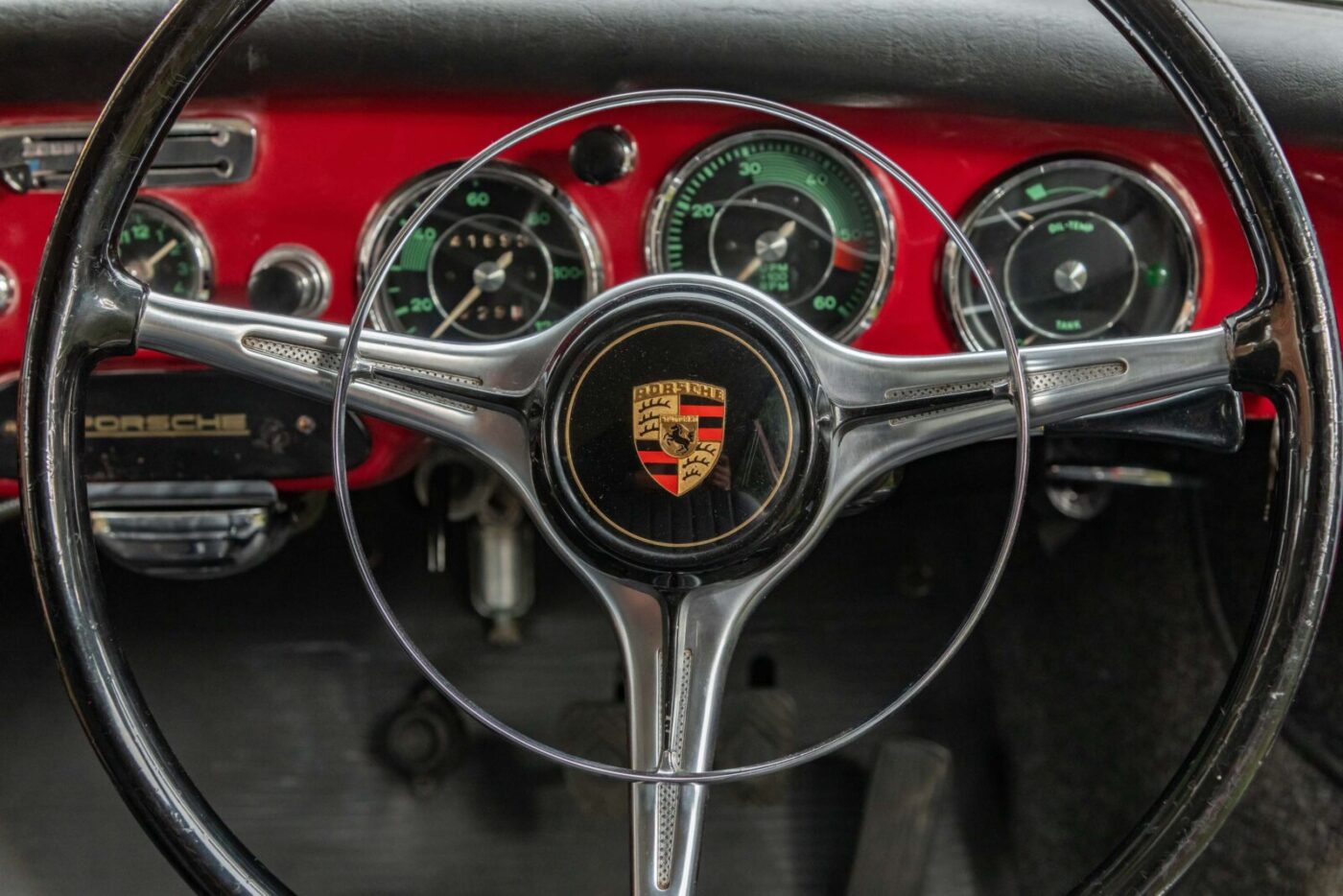
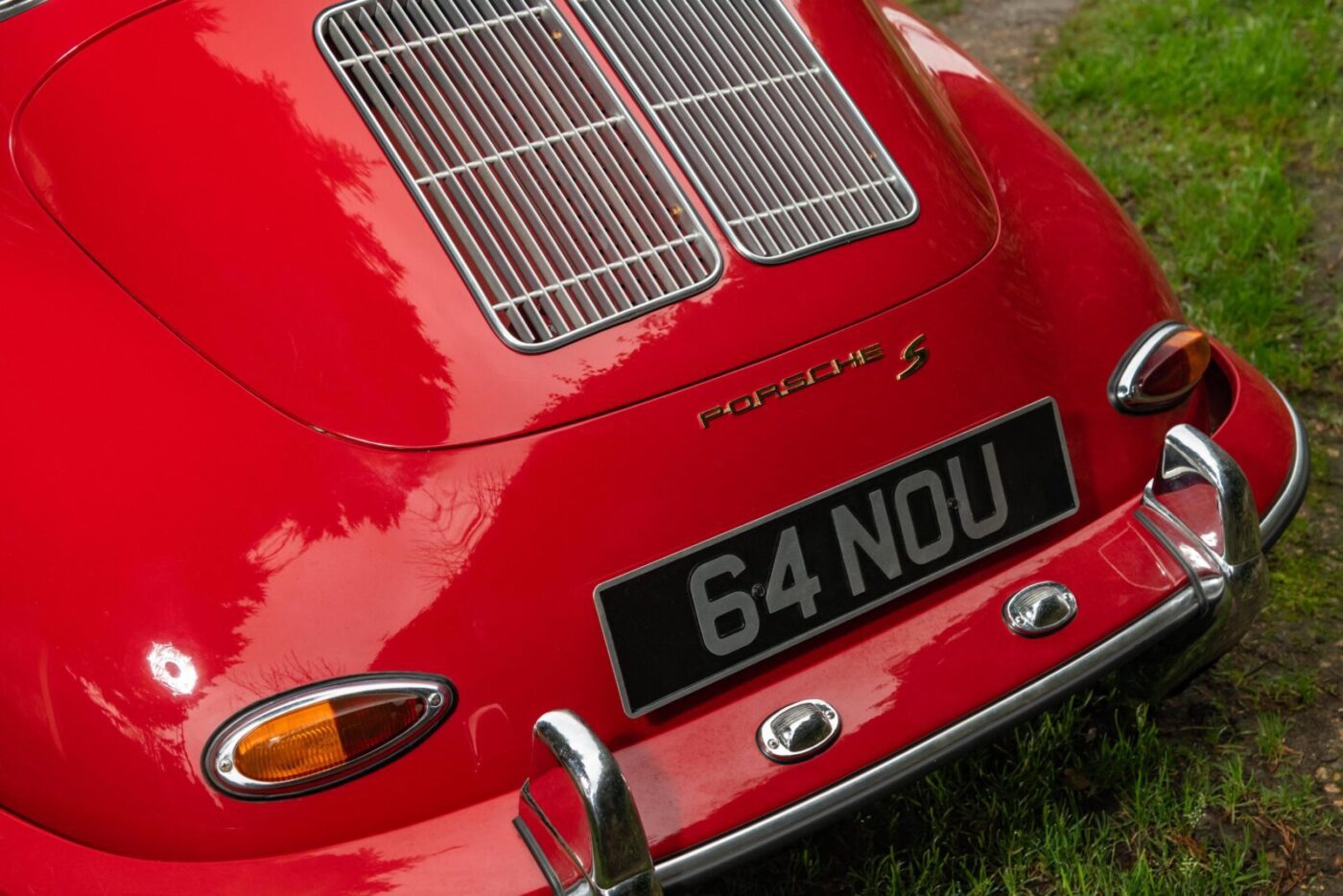
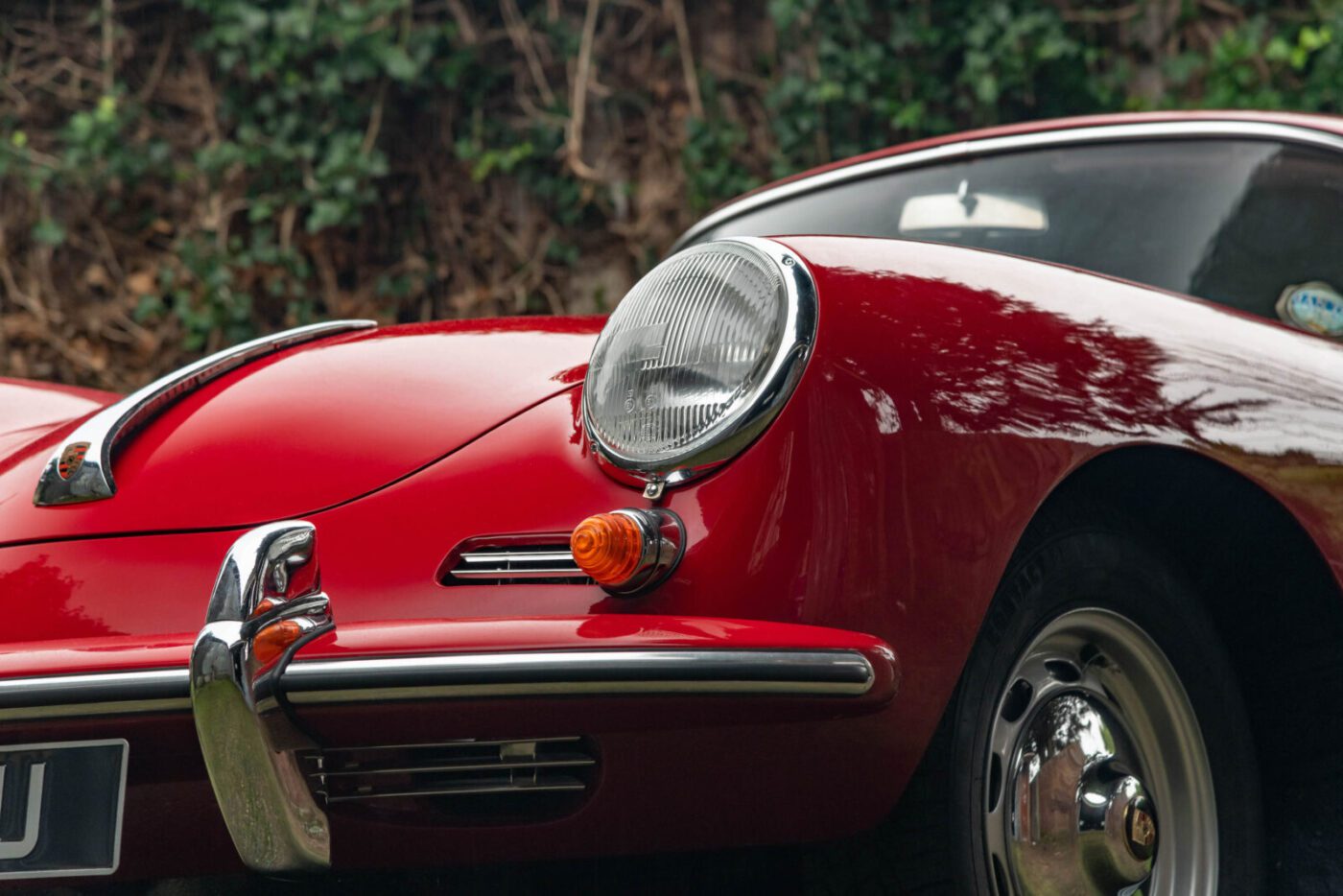
Hooked on Porsche
But its value is a secondary consideration to Mike, 76, who was hooked on Porsche’s first series production car the moment he saw one.
“I just thought ‘that’s lovely’,” he says, at his home in Hornchurch, Essex. “This car means a lot to me because I’ve done most of the work on it myself. I actually enjoy doing the work more than driving these days, with so many cars on the road and speed bumps and cameras everywhere.”
When he bought the rear-engined Porsche, Mike already owned a 356A that previously belonged to his then father-in-law, who sold it after about three years in favour of something a little larger.
“I actually saw the car he bought before he did,” says Mike. “I was living at a house about a mile away, and the guy bringing the car round to him to show him missed his turning and turned into my road.
“I happened to be out in the front garden and this 356 came and stopped out on the pavement, and I could see he was lost. I said ‘are you looking for Mr Dean?’ He could not believe it…
“My father-in-law decided he could not handle it anymore; he was a big chap.”
At the time, Mike was saving up to buy a VW Beetle but, when the 356A became available, it wasn’t a hard decision.
READ MORE ABOUT SOME OF OUR GREATEST CLASSIC CARS WITH

A series of articles on our Cult Classics site.
356s weren’t worth a lot
“I paid the money I was prepared to pay for a Beetle, which was £375,” he says. “The 356s weren’t really worth a lot then because the 911 had come out. A lot of people dropped the 356s in favour of the 911.
“Owning a 356 before a Beetle is not the usual way round!”
That first 356 was used to tour France on a camping trip in the early 1970s, where it caused quite a stir with the locals.
“When you went into villages, kids would come running out ‘la Porsche, la Porsche’,” he says. “They were just amazed. I’d never had that sort of thing happen before in England.”
On the long journey through France and, later, Germany, Mike says “it didn’t miss a beat, it just throbbed away”.
Unfortunately, the car was driven into a ditch by his first wife, who he describes as “a good driver, but she didn’t hang about!”.
Mike wasn’t happy with the repairs, so decided to take the car off the road and do the work himself.
That was the cue for him to buy a second 356, this time a later B model from 1963. After all, at £365 it wasn’t overly expensive, equivalent to about £2,650 in today’s money.
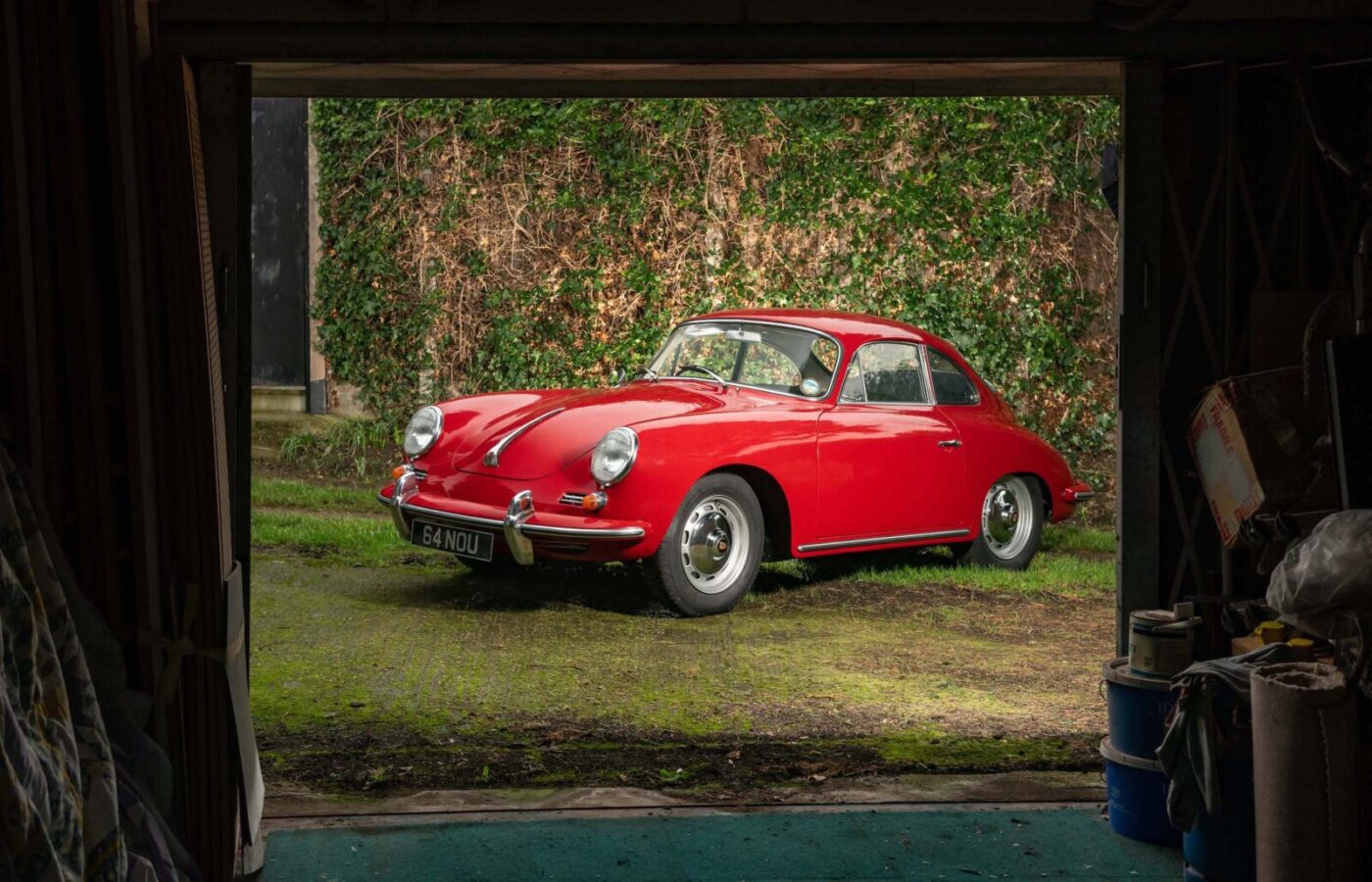
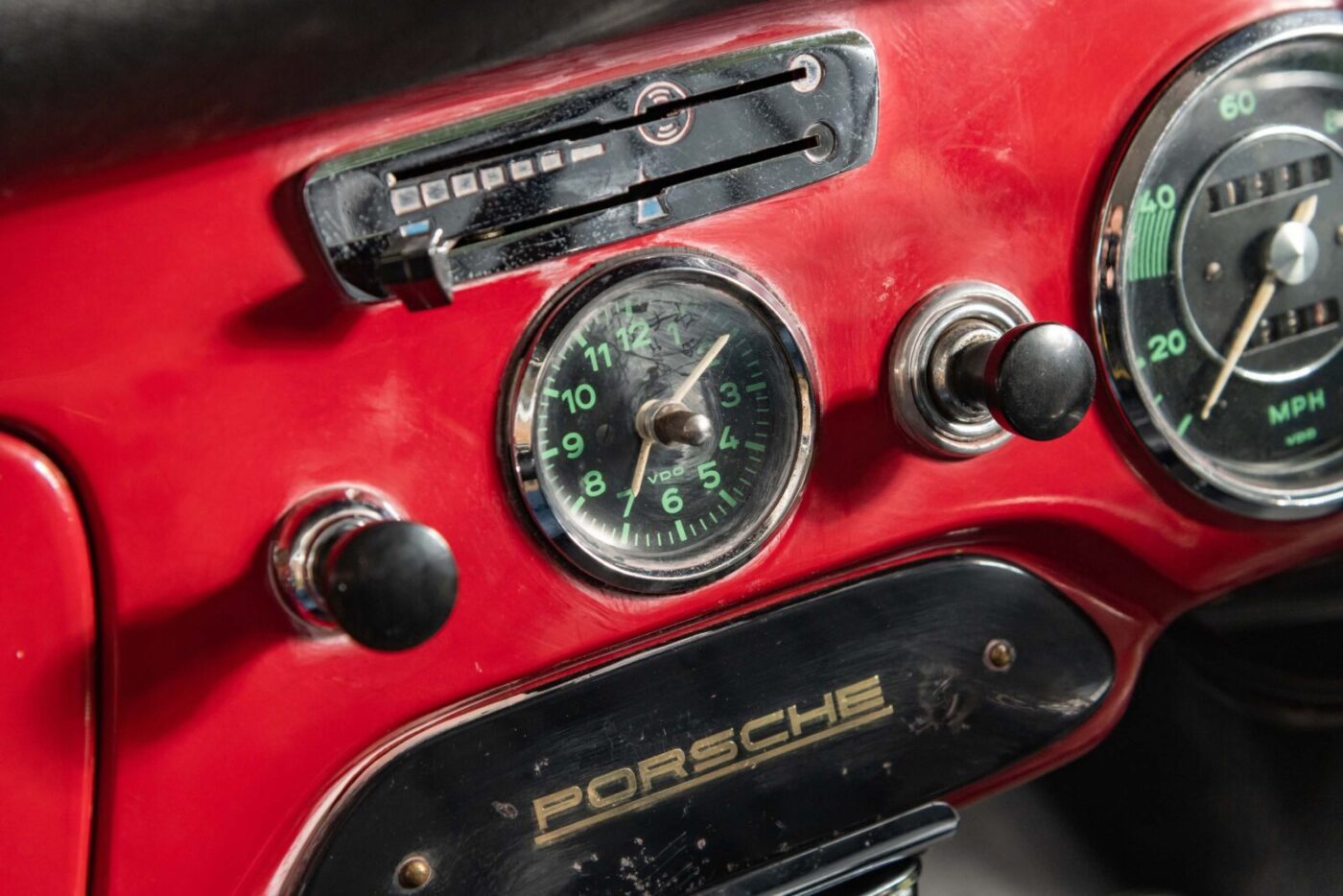
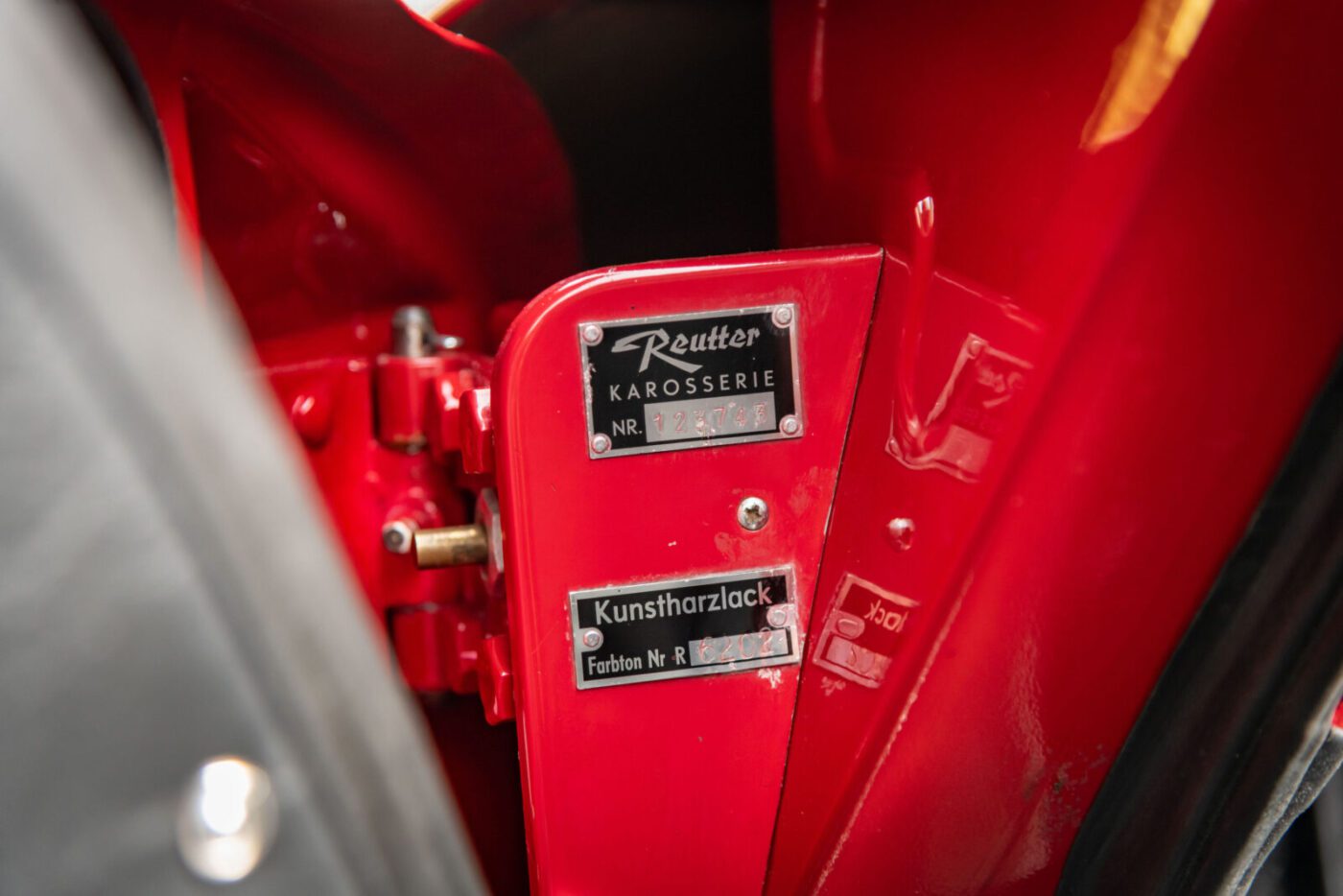
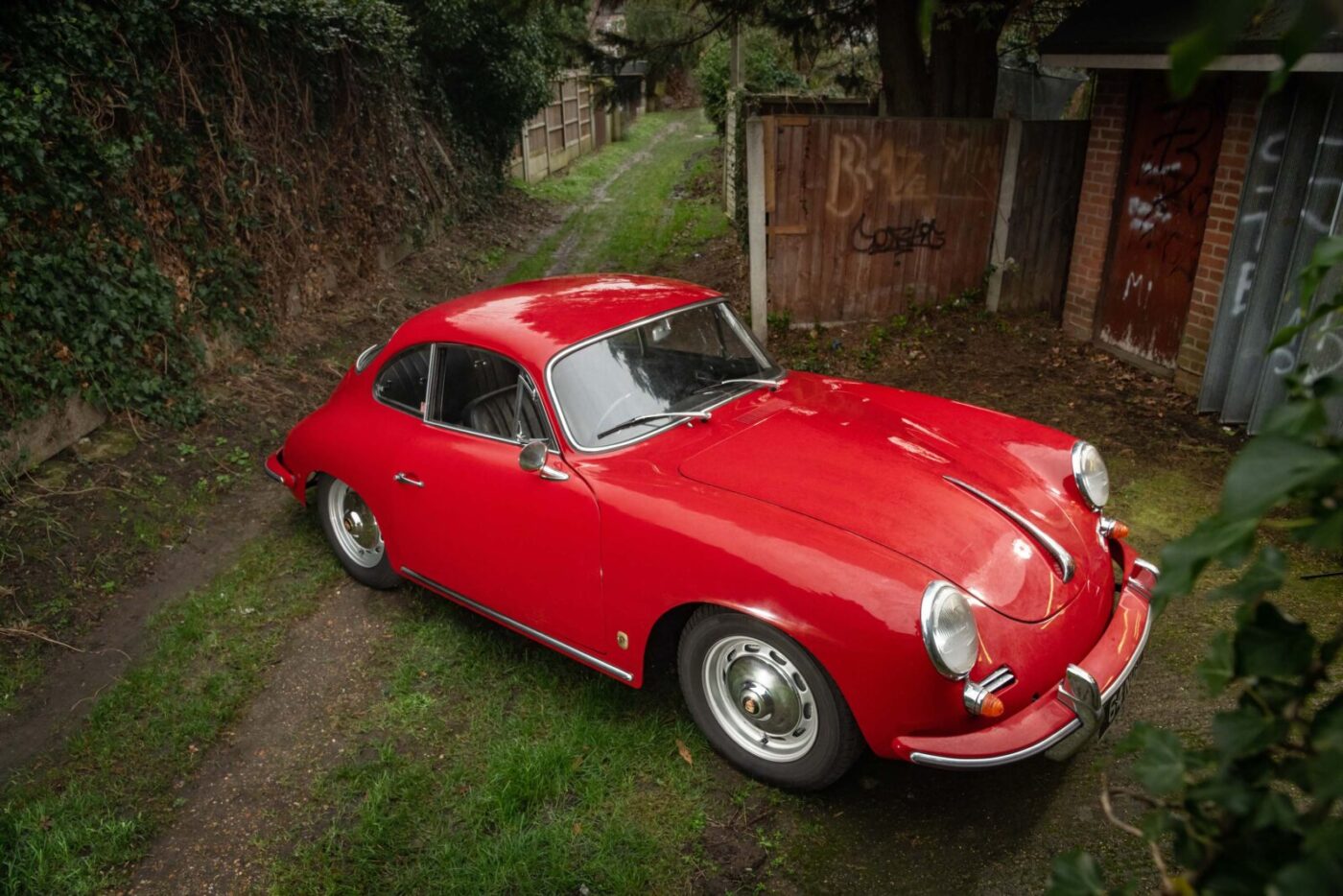
“It drove super”
“I was attracted to it because it had not been mucked about with,” he says. “Nobody had tried to mess with the panels – it was warts and all. It drove super.”
After a while though, Mike spotted some tell-tale signs of deeper problems with rust breaking out around the headlights and front wings next to the doors.
It, too, was taken off the road – its last three-month tax disc expired in January 1977 – for Mike to carry out what was planned as a fairly swift restoration.
Unfortunately, it didn’t turn out that way.
“I started doing it in the front garden of the house,” he says. “The A was in the garage, and I made a frame with a big cover over the top. I used to pull it over the top when I came home in the evening, start working on it outside, and pull the cover back over when I’d finished.”
Actually finishing the car was a different matter though, Mike forced to move out of his house – which was owned by his father-in-law – following a divorce.
A second marriage and two children followed, and work on the 356 took a back seat as family life and work took priority.
Born in Ilford during the war, Mike started work at 15 for a firm of coachbuilders before a short spell in a printworks, which he found “claustrophobic” and “mind numbing”.
81.5% of customers could get a cheaper quote over the phone
Protect your car with tailor-made classic car insurance, including agreed value cover and discounts for limited mileage and owners club discounts

A variety of jobs
A variety of jobs followed, including helping to build the new sewer from Ilford to Chadwell Heath, a short stint as a greengrocer roundsman, and work for the Electricity Board before joining the GPO, later to become British Telecom.
“All the jobs I did somehow gave me confidence and knowledge of other things like electrical wiring, and all sorts of other stuff,” says Mike, whose varied skill set eventually led him to set up his own business repairing predominantly VW Beetles.
“By the late 1970s I also owned a Beetle and, because people would see me working on my car, they asked me if I was a VW mechanic.
“I said I’d educated myself, but I got asked to go and fix people’s cars at their homes, fitting exhausts and things like that.”
In 1978, he cashed in his superannuation for just under £1,000, using it to buy a row of five lock-up garages to give him a base for his hobby-turned-business.
“It grew into a full business, and I got so busy that a friend of mine who also left BT the same day as me, and was doing the same in Canvey with VWs, would come down to help me.”
Because of his own interest in Porsches, Mike also undertook some work on customers’ 356s, but generally steered clear of the more modern 911.
“They were more complex, a bigger car to deal with and they had their own problems that I didn’t feel I wanted to deal with,” he says.
“I’m so used to old technology like the Beetles – points and plugs etc.”
Mike was so focused on working on customer’s cars that his own pair of 356s remained untouched…
Missing a Porsche in his life, but lacking the time to restore his own, in 1981 he went out and bought a bright yellow 914, a collaboration between VW and Porsche.
“I wanted another Porsche to drive but there was too much to do on the B to get it back on the road, and I was trying to get hold of a front clip for the A,” he says.
“I went to a couple of Porsche meets with the 914, but coming back from Bournemouth the suspension collapsed. A Porsche guy stopped and had some wooden wedges, so I hammered them between the suspension arm and the chassis so I could drive it home.
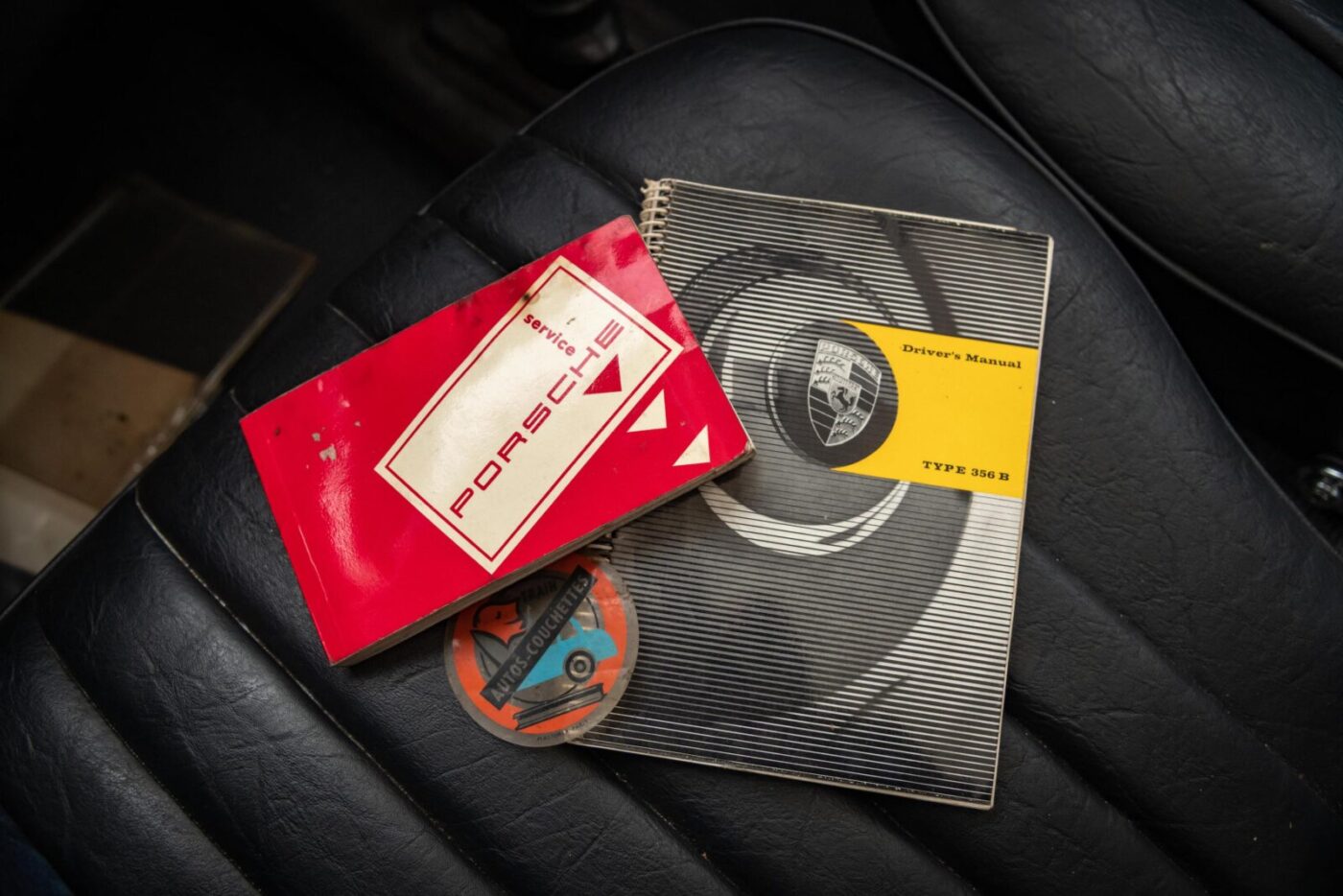
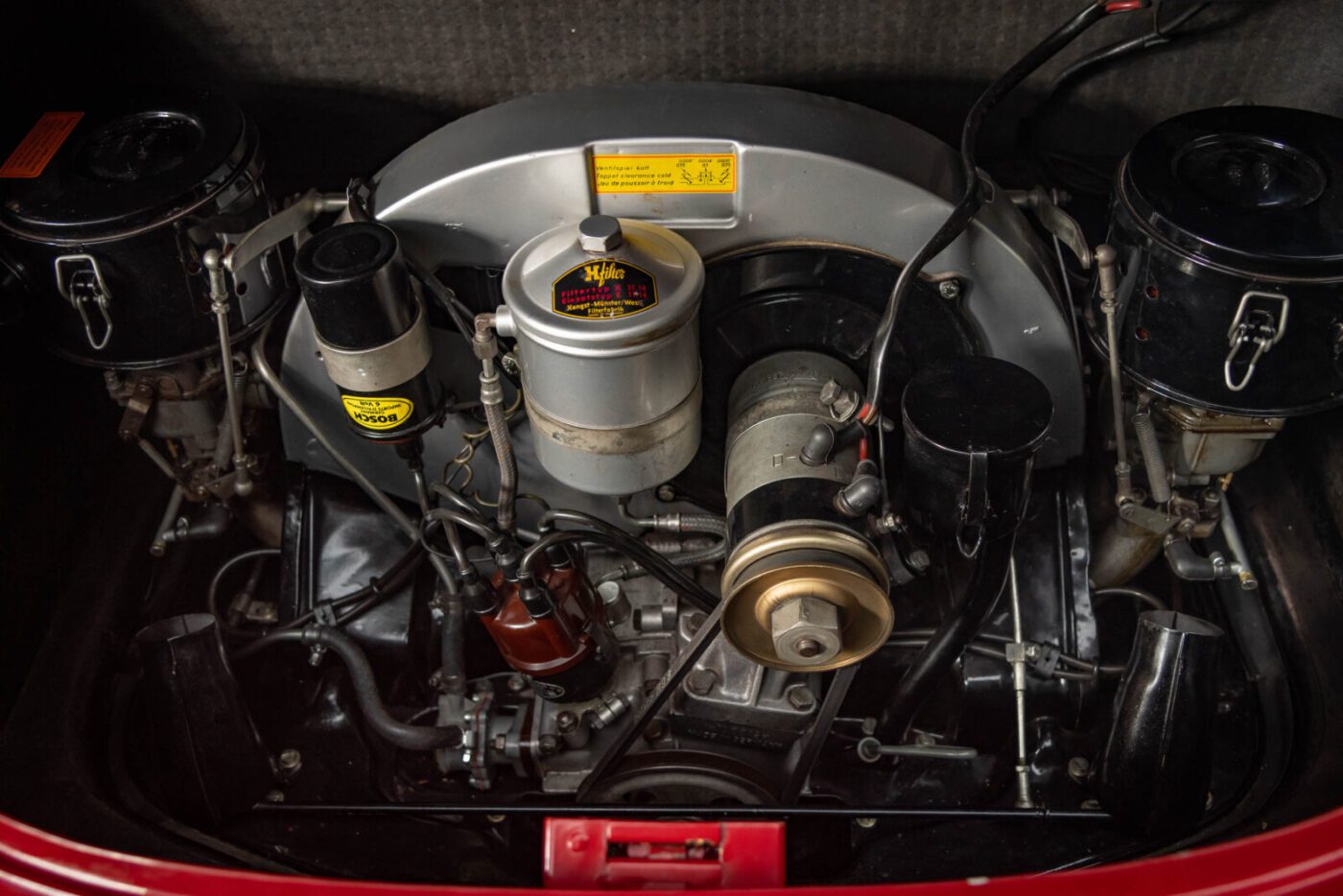
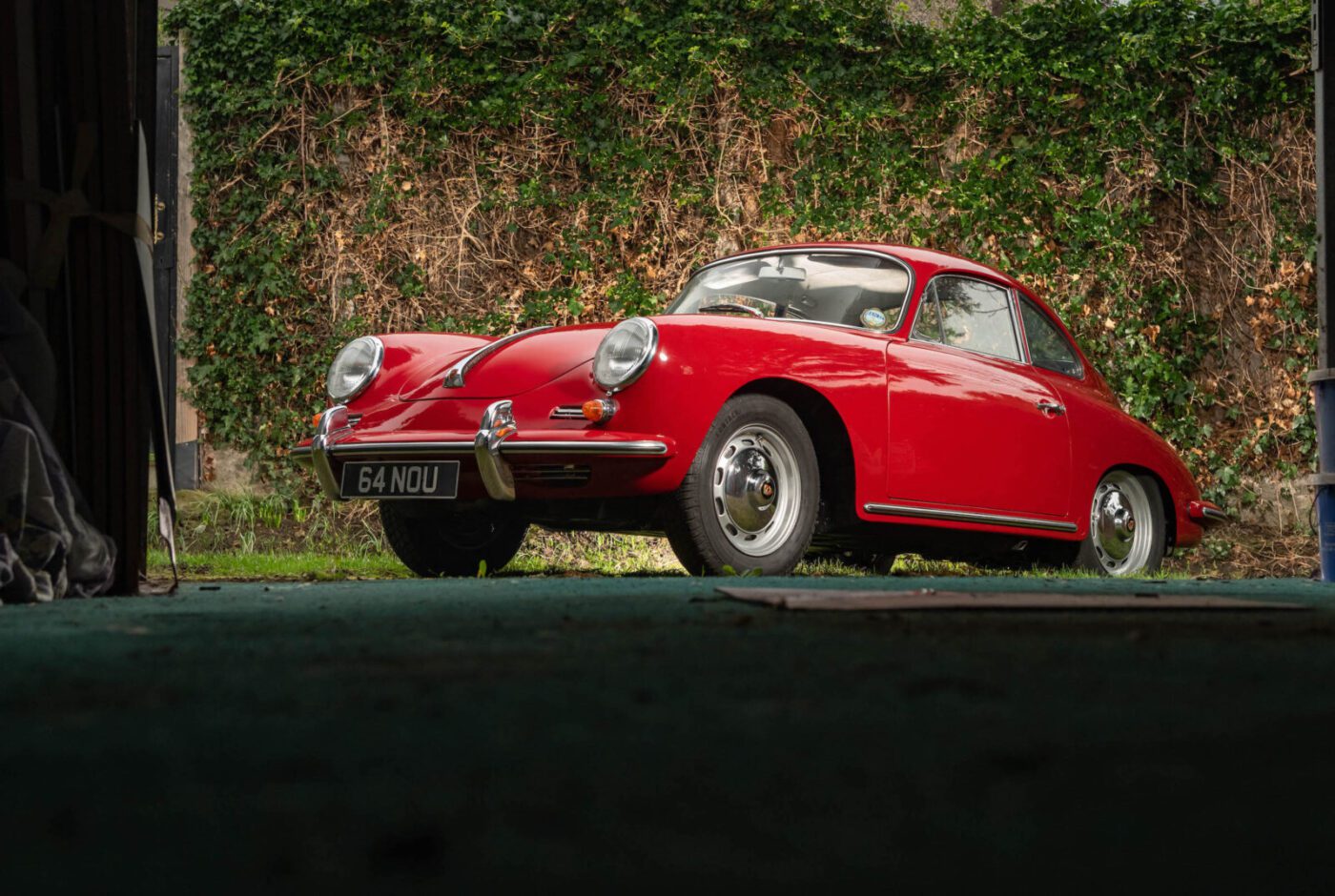
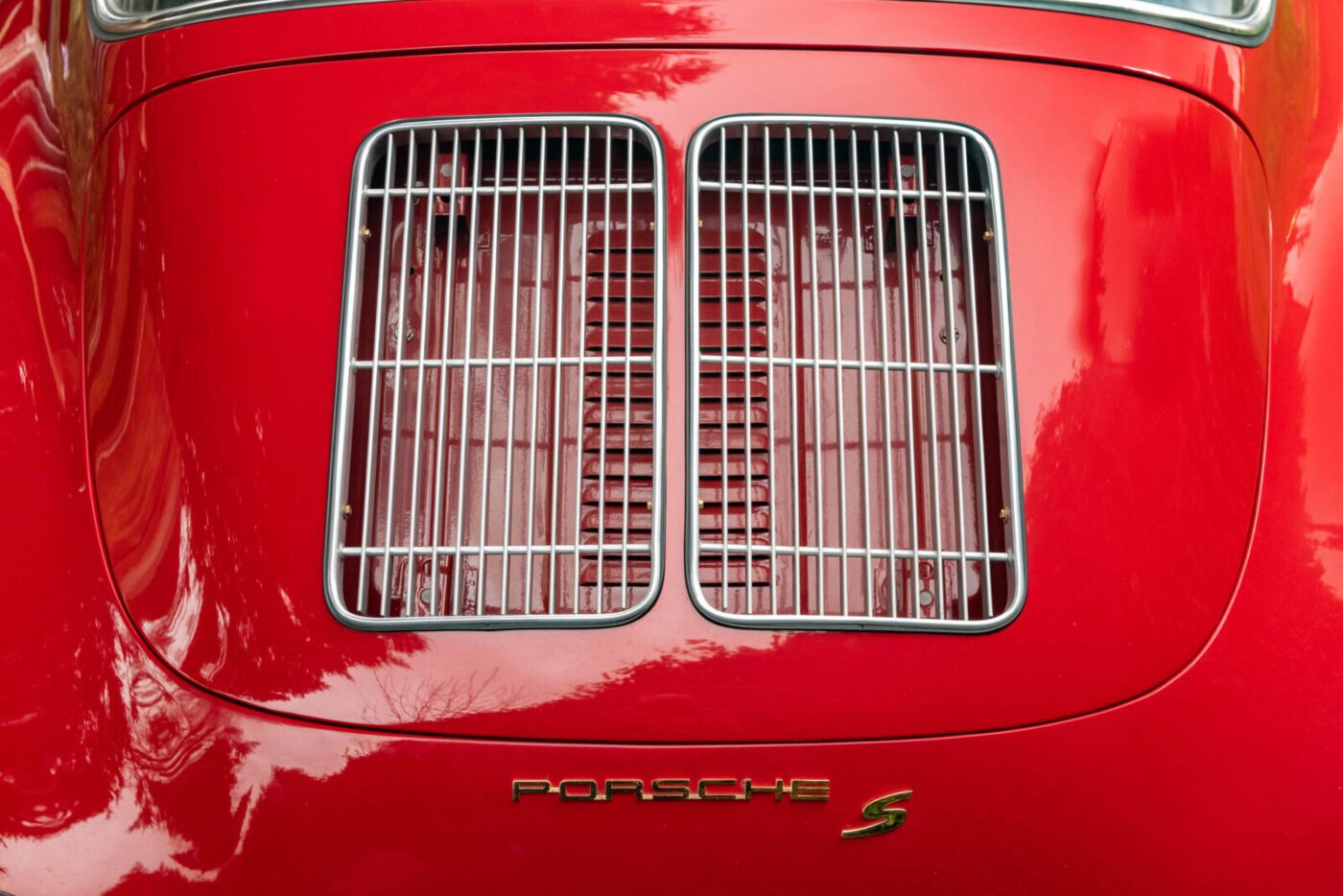
“I was going to scrap it”
“I was going to scrap it, but my mate said ‘you can’t do that!’. In the end, I drove with a friend with a trailer to a breakers yard in Ipswich and bought another shell.”
It wasn’t until 2006, shortly before Mike retired and sold the garage plot, that he finally embarked on the 356B’s long road back to health.
“I knew I didn’t have enough time left to do both the A and the B, I was already 63 or 64 at the time, so I sold the A and started work on the B,” he says.
Launched in 1948, the 356 initially shared many parts with VW, a practice gradually phased out during the 1950s.
Porsche contracted Reutter to build the steel bodies, eventually buying the company and leaving just the seat manufacturing part, which changed its name to Recaro, as a standalone.
Demand for the cars built over the years, partly thanks to its success in motorsport, and the flat-four engine was constantly developed, culminating in the 130bhp, 1966cc unit in the 356C Carrera 2.
Mike’s car is powered by the 1582cc pushrod unit, but even at a mere 75hp it can hustle the lightweight sports car along at a theoretical 120mph – quite a feat for a car of this period.
Initially working on the car at weekends, Mike gradually got to the point where he could dedicate some weekdays to the rebuild, which was further interrupted by a shoulder operation.
“Mechanically, it was more or less as it had been left,” he says. “It had been in a garage, not a particularly dry garage, but I was surprised at how much work I’d already done that I’d forgotten.
READ MORE ABOUT SOME OF OUR GREATEST CLASSIC CARS WITH

A series of articles on our Cult Classics site.
“Really, really rotten”
“I had done an awful lot on the bodywork prior to stopping, but the front offside wing around the headlight area and below was really, really rotten, and I could not repair it.
“At the time they were really hard to get hold of but, fortunately for me, I had a friend who had crashed a 356 at Brooklands and stoved the front near side, so I bought the offside front section of the one-piece front clip that they didn’t use.”
The low-mileage engine and the gearbox required little attention, but the seats were retrimmed in new vinyl, while the car was treated to new carpets, headlining and a re-covered dashboard top.
Once Mike had completed all the welding, the car was resprayed in ruby red, with the majority of the aluminium trim replaced or rechromed.
Finally, after 10 years, the car was taxed again in November 2016, just over 40 years since it last troubled DVLA.
At times, he admits, the restoration looked like “a mountain to climb”.
“You try to get things done and people are not always cooperating,” he says. “I just get blinkered, just plod on.
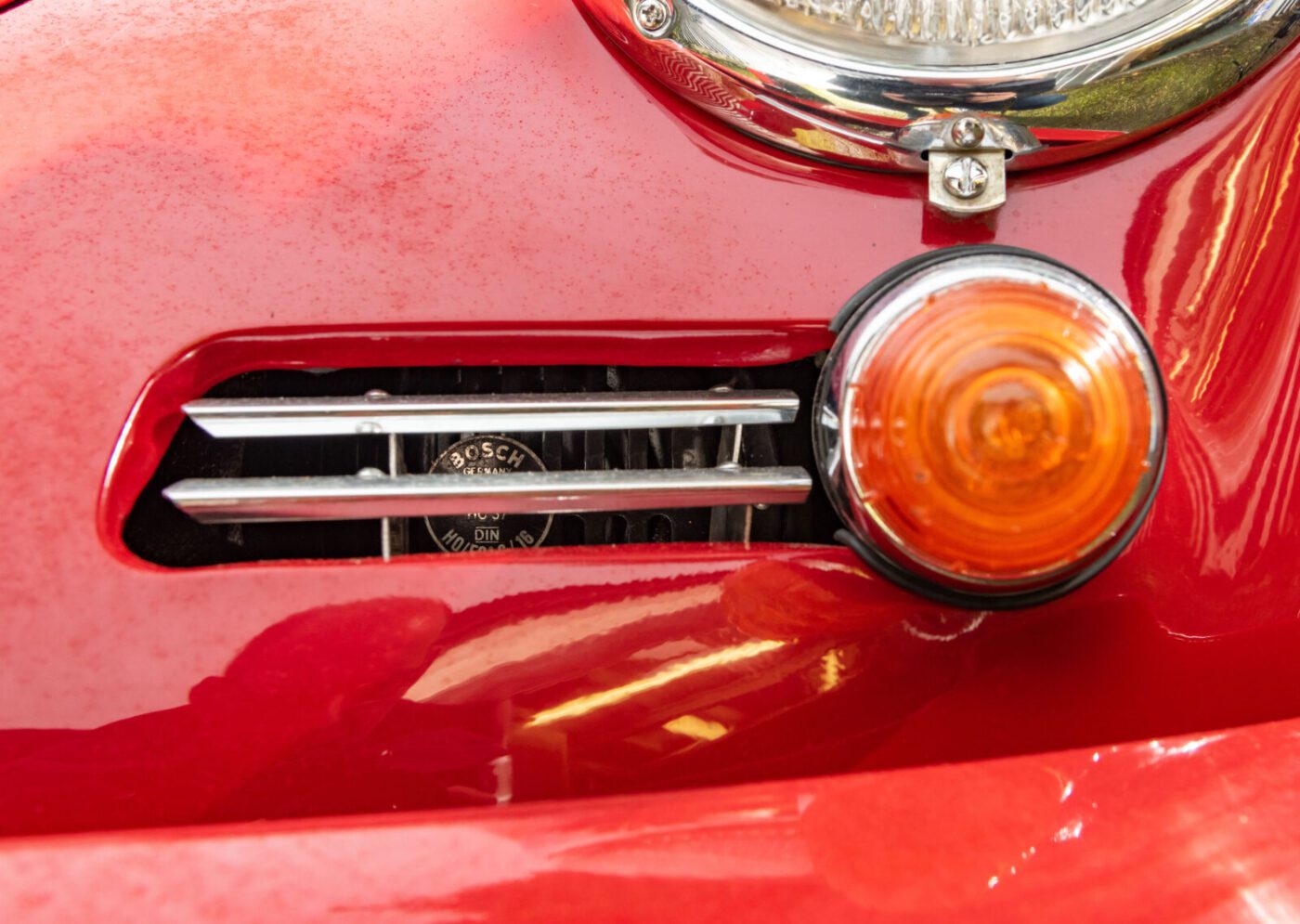
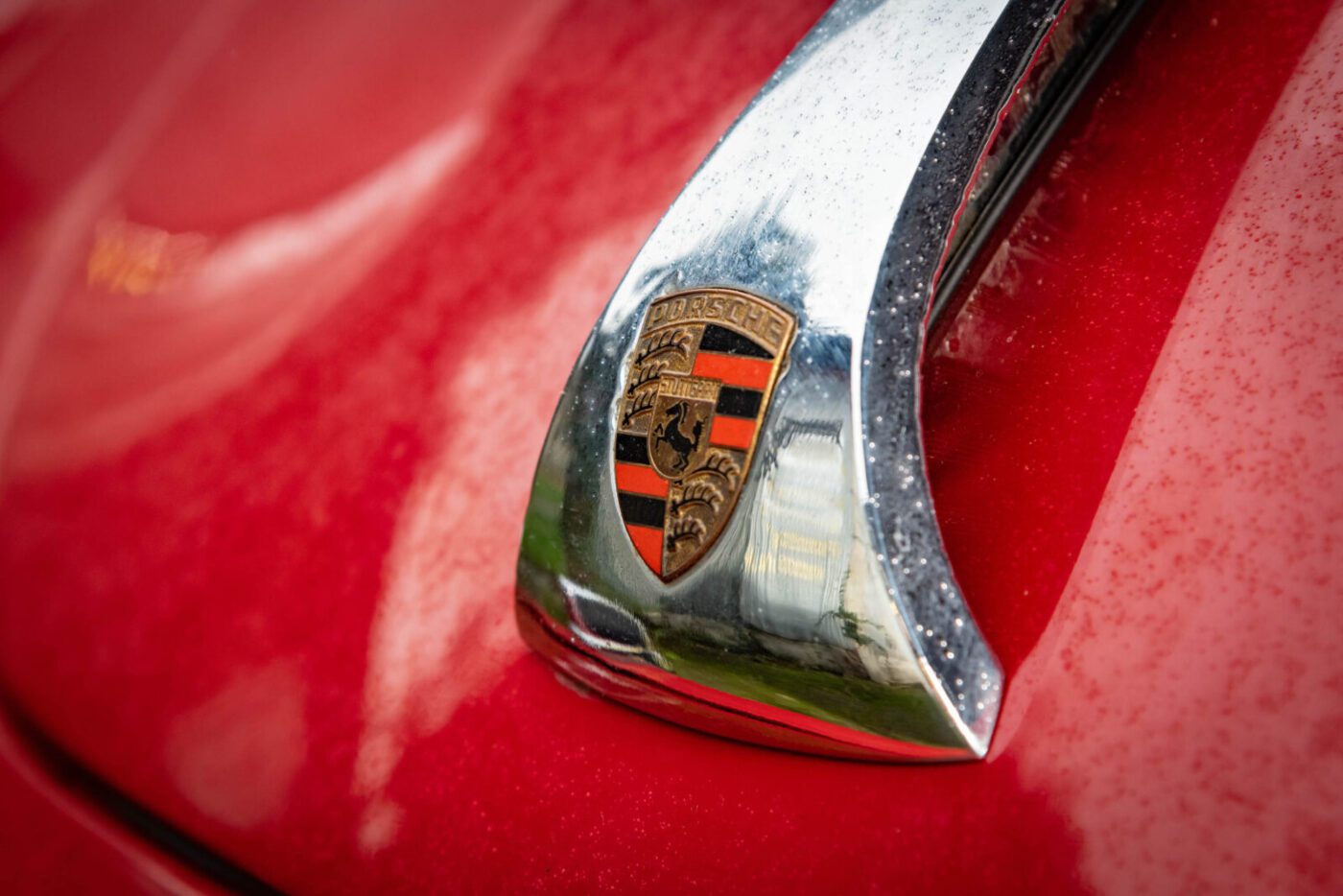
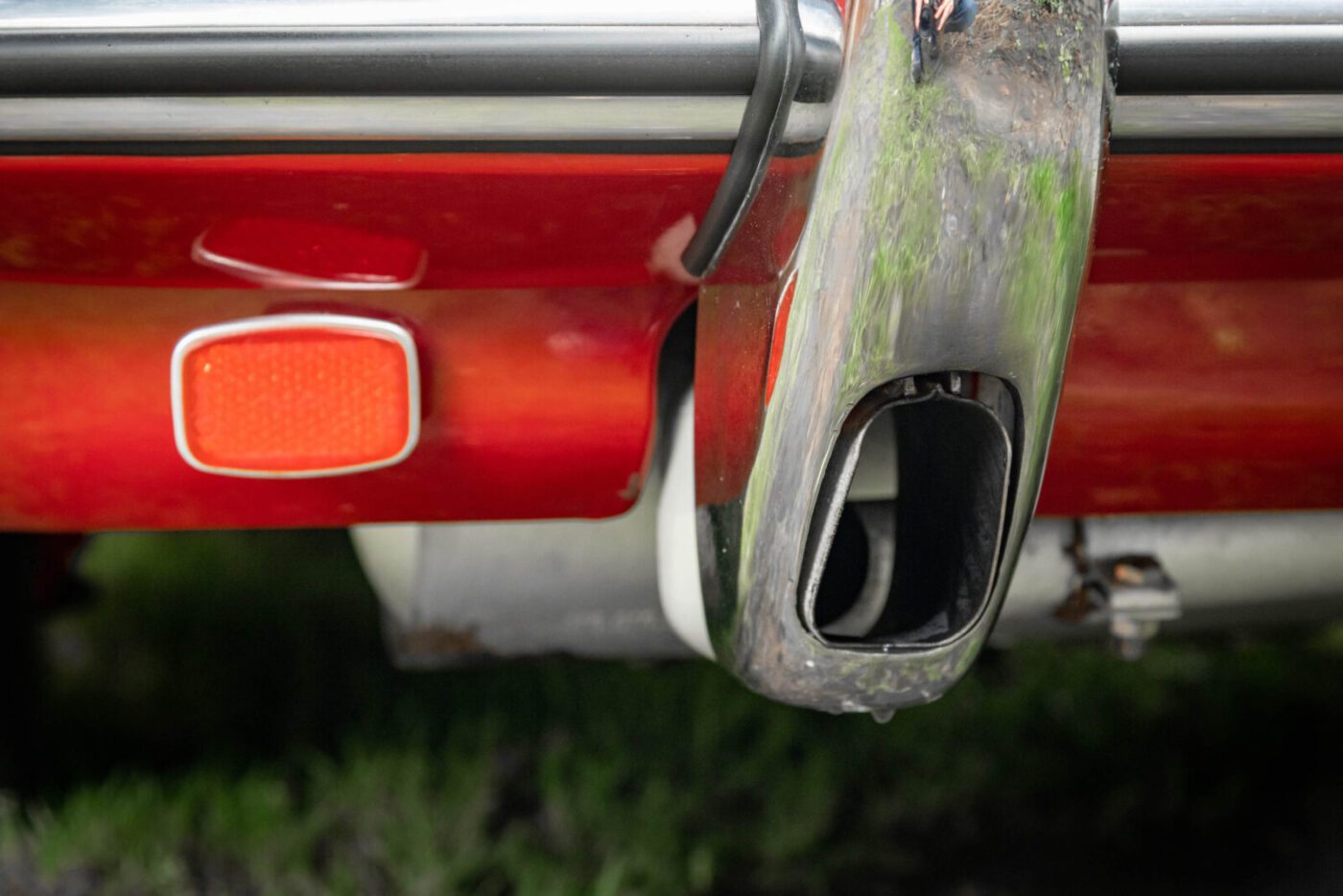
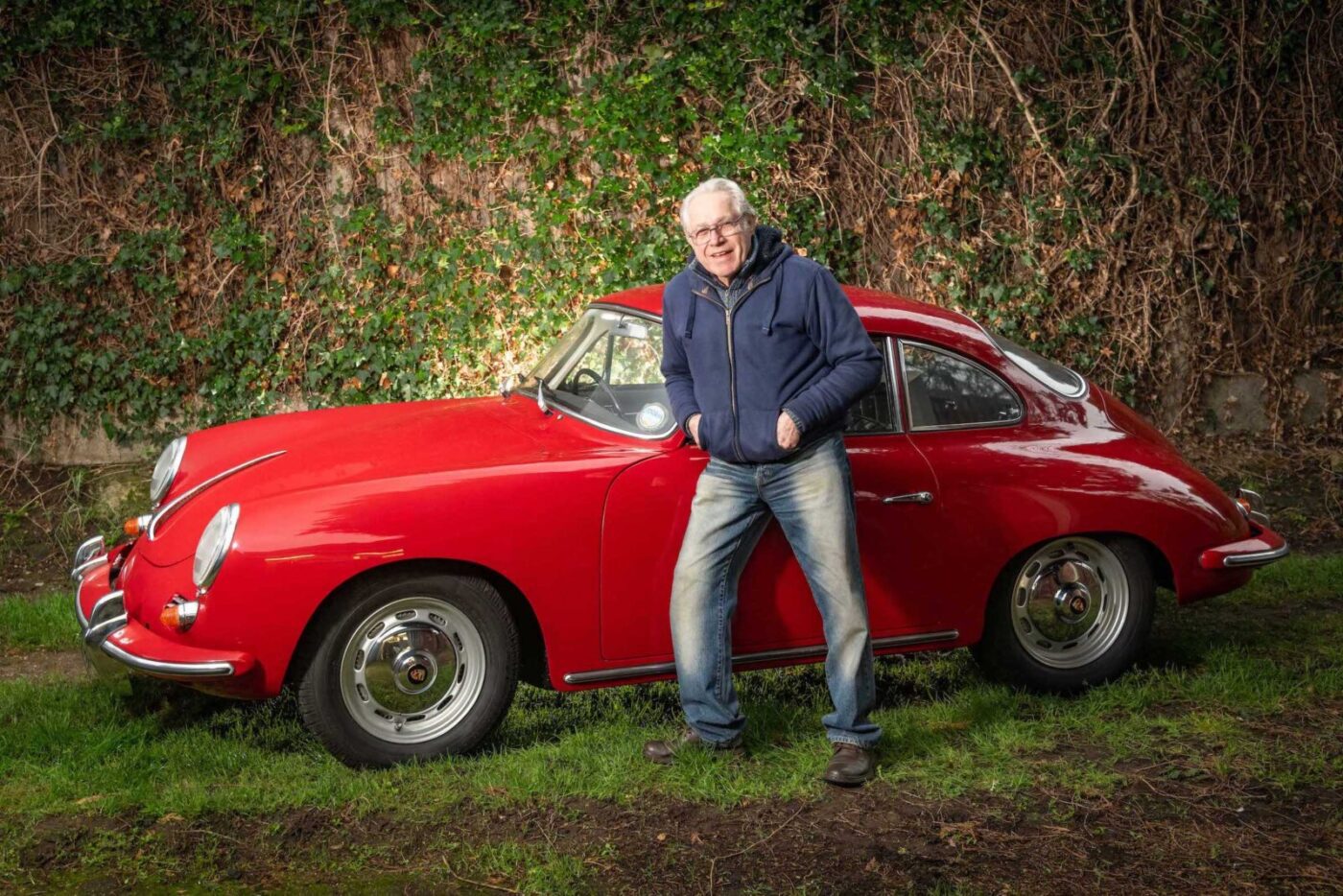
“I won’t give up on anything”
“The thing that turns me on is retrieving things, saving things – I’ve done everything from hoovers to bikes. I won’t give up on anything, that’s my trouble.”
So what was it like to get back behind the wheel of a car he had last driven in early 1977?
“It was great getting out to Ongar in the lanes, and I use it whenever I get the opportunity to do a decent drive,” he says. “I don’t want to just take it down the road and do five miles, there’s no point.
“After driving modern cars, you’re suddenly aware of how it’s from a different era of driving and feel.
“It’s very light on the front, so when you go into a bend you’ve got to make sure you get all the speed out beforehand. If you try to brake in the bend then everything goes, the rear suspension starts acting and then it starts steering from the back because of the swing axle. There’s a technique to driving it.”
These days, of course, the Porsche attracts far more attention than it ever did in its youth.
“The reaction now is more like those kids in France,” he says. “When I pull into a petrol station people come out of the woodwork and want to know about it. It seems strange now.”
Motoring icon
Having spent a decade bringing his pride and joy back to showroom condition, what does the future hold for this stunning motoring icon?
“My intention is to keep this and the 914 until such time I either can’t afford to live, when I might have to sell, or I pop my clogs,” he smiles, his son Michael a devotee of more modern, economical cars who currently drives an electric VW Golf GTE.
“Something like this is not practical for him, but I do keep thinking about what arrangements I need to make for them.”
For now, he’s just going to enjoy the fruits of his labour as much as he can.
“I didn’t get it done until quite late, and I want to get more of a chance to use it,” he says.
